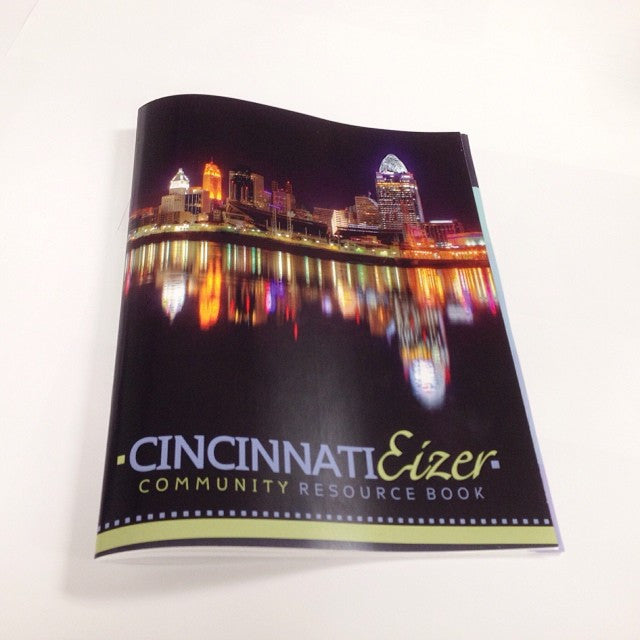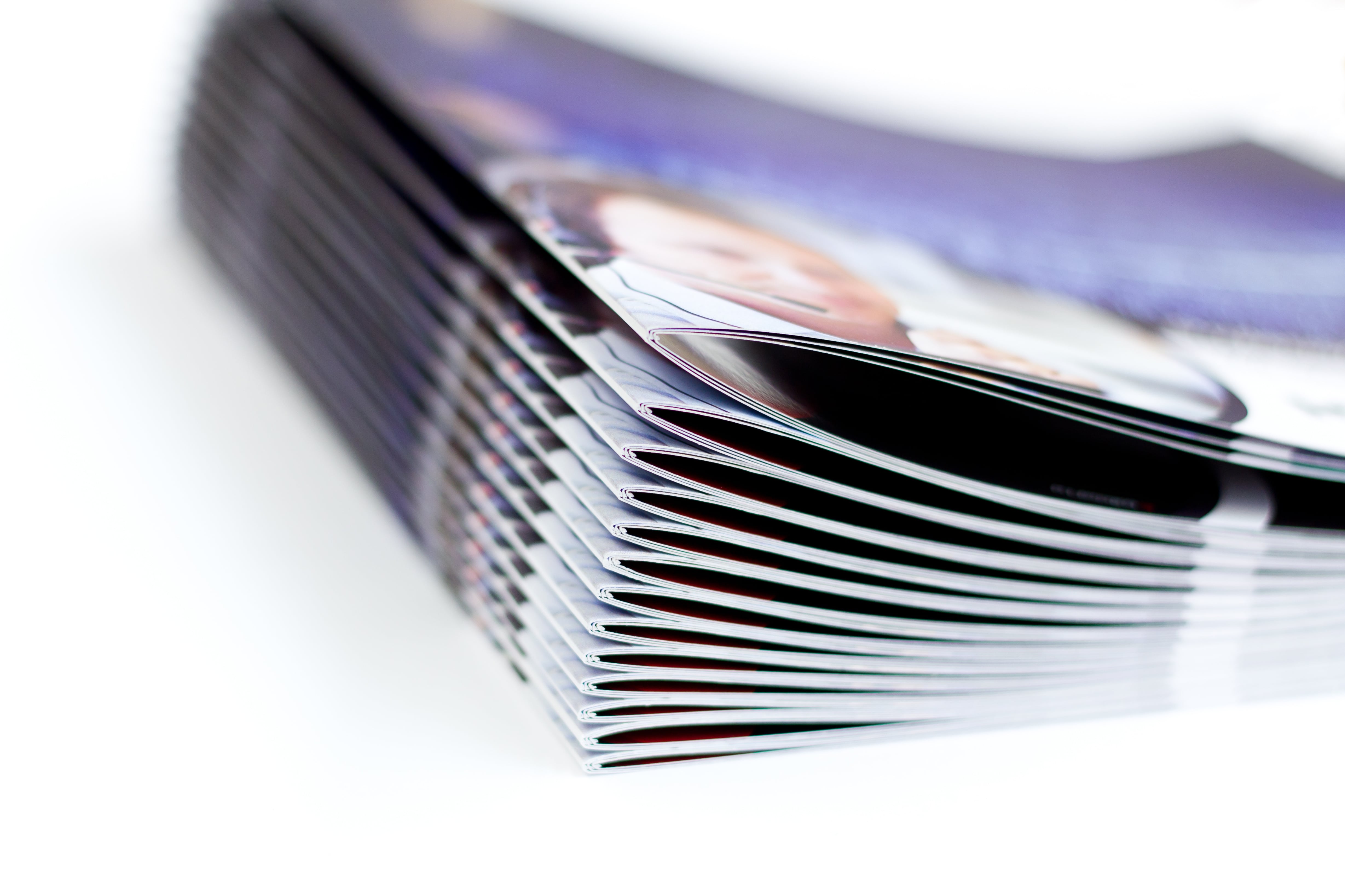Creative Finishing Techniques That Elevate Your Booklet Printing Results
Creative Finishing Techniques That Elevate Your Booklet Printing Results
Blog Article
The Important Guide to Understanding Pamphlet Printing Options and Techniques
The procedure of booklet printing entails several factors to consider that can considerably impact the end product. From picking the proper layout and size to recognizing the nuances of binding techniques, each choice plays a crucial function. Furthermore, elements such as paper supply and printing techniques more influence the performance of the brochure. As one browses these alternatives, it ends up being necessary to comprehend just how they interconnect and what that implies for the general outcome.
Recognizing Brochure Layouts and Dimensions
When considering brochure printing, comprehending the various formats and sizes available is vital for accomplishing the desired discussion. Brochures can be produced in numerous formats, consisting of saddle-stitched, spiral-bound, and perfect-bound, each offering distinct advantages. Typical dimensions vary from typical letter (8.5 x 11 inches) to smaller choices like A5 (5.8 x 8.3 inches), permitting flexibility based upon material and target audience.Selecting the appropriate size can influence both the layout and reader interaction. Bigger dimensions could match visually driven material, while smaller layouts may be more user-friendly and mobile. In addition, the number of web pages influences the option of binding technique, as thicker brochures may require stronger bindings. Inevitably, comprehending these aspects allows for a more tailored technique, guaranteeing that the end product straightens with the designated message and visual, enhancing the overall performance of the interaction.
Selecting the Right Paper Stock

Binding Approaches: Choices and Factors To Consider
When it comes to binding approaches for pamphlets, several alternatives are offered, each with distinct benefits. Saddle stitch binding supplies an affordable solution for thinner booklets, while excellent binding techniques provide an even more polished search for thicker magazines. Wire-O binding stands apart for its toughness and simplicity of usage, making it perfect for papers that call for versatility.
Saddle Stitch Binding
Saddle stitch binding provides a useful and affordable solution for constructing pamphlets, making it a preferred selection among publishers and organizations. This binding technique includes folding sheets of paper in half and stapling them along the fold line, developing a cool and organized appearance. Commonly ideal for brochures with a reduced page matter, saddle stitching is suitable for publications, brochures, and instructional materials. The simpleness of this strategy permits fast manufacturing and is frequently favored for marketing products or brief runs. It is important to keep in mind that saddle stitch binding may not be ideal for thicker pamphlets, as the spine might not hold up under increased weight. On the whole, it stays a reputable option for numerous printing tasks.
Perfect Binding Methods
Perfect binding is a widely made use of strategy that gives a polished and professional surface to publications and pamphlets. This technique involves gluing the pages together at the back utilizing a strong adhesive, enabling a clean side and the ability to hold a bigger variety of pages compared to saddle sewing. Perfect binding is especially ideal for thicker pamphlets, such as magazines and yearly records, where a tough, level spine is wanted. Additionally, it supplies the option for a printed cover that can be developed to improve aesthetic appeal. Factors to consider such as web page count, paper weight, and the meant use of the pamphlet ought to be taken into account, as they can influence longevity and overall high quality.
Wire-O Binding Options
Wire-O binding, understood for its durability and adaptability, provides a superb alternative for pamphlets that call for very easy web page turning and a specialist appearance. This binding technique utilizes a series of steel loops that hold web pages firmly, allowing them to exist level when open. It is particularly ideal for handbooks, catalogs, and discussions due to its robust nature. Wire-O binding is readily available in different colors and sizes, fitting different page matters and densities. In addition, it allows the addition of covers and tabs, improving the booklet's general visual. Considerations for Wire-O binding consist of the option of cable shade, the size of the loops, and the extent of modification desired, all of which can exceptionally influence the last item's appearance and performance.
Digital vs. Offset Printing: Which Is Best for You?
When selecting a printing approach for booklets, understanding the differences in between electronic and balance out printing is essential. Digital printing makes use of modern-day innovation to generate premium prints promptly and affordably, making it ideal for short runs or projects needing fast turnaround times. It permits personalization, giving the capability to publish on-demand with marginal waste.In comparison, offset printing is a typical approach that excels in creating big amounts with consistent quality. It includes transferring ink from a plate to a rubber covering, then to the paper, which results in accurate information and dynamic colors. However, counter printing typically requires longer arrangement times and is a lot more cost-effective for bigger volumes.Ultimately, the choice between digital and offset printing relies on job needs, budget, and desired quantity. For small, time-sensitive tasks, electronic may be the best choice, while balanced out might be better for bigger, top notch productions.

Designing Your Pamphlet: Tips and Finest Practices
When developing a brochure, careful attention to layout, font choice, and shade usage can considerably boost its effectiveness. A well-structured layout overviews the viewers's eye, while proper fonts ensure readability and communicate the preferred tone. Additionally, reliable usage of color can evoke feelings and highlight key details, making the total design more impactful.
Selecting the Right Format
Exactly how can one successfully select the appropriate layout for a pamphlet? Initially, it is crucial to review the pamphlet's objective and target audience. A clean, organized design boosts readability and engagement. Utilizing a grid system can aid in straightening components consistently, producing an expert appearance. Additionally, integrating visual power structure through differing sizes and positionings of photos and great site message can assist the visitor's eye and stress crucial info. It is also crucial to leave adequate white area, which prevents congestion and enables better emphasis. Ultimately, testing various designs with mock-ups can offer insight into exactly how the layout performs in real-world scenarios, making sure that the last item satisfies both practical and visual needs.
Selecting Proper Fonts
A well-chosen font style can substantially boost the total layout of a pamphlet, enhancing the format and strengthening the material's message. The choice of fonts need to consider readability, particularly for body message, as it ensures the info is available to all readers. Sans-serif typefaces are usually liked for digital layouts, while serif font styles can lend a traditional feeling in printed materials. It's recommended to limit font choices to two or 3 to maintain aesthetic comprehensibility. Additionally, font style dimension plays an important role; headings must be not frustrating however unique, while body message need to fit for analysis. When selecting fonts, placement with the booklet's motif and target market is content vital for reliable communication and visual appeal.
Reliable Use Shade
Color serves as an effective tool in pamphlet layout, shaping perceptions and leading viewers feelings. It can stimulate sensations of excitement, peace, or depend on, depending upon the hues chosen. Developers ought to consider color theory concepts, making certain that the chosen combination straightens with the pamphlet's message and target audience. For example, making use of warm shades like red and orange can create seriousness, while cooler tones like blue and green foster tranquility.Additionally, comparison plays an important role; corresponding colors can enhance readability and aesthetic appeal. Consistency in shade usage throughout web pages additionally enhances brand identity and communication. Eventually, reliable color execution not just catches focus yet also reinforces the booklet's function, making it an important aspect of successful style.
Finishing Touches: Coatings and Special Results
While many think about the content and format of a booklet the most critical components, the ending up touches, such as finishes and special impacts, play a vital duty in boosting its overall appeal. Coatings can give security and longevity, making certain that the booklet holds up against damage. Matte coatings offer an innovative, non-reflective surface area, while glossy coatings can make shades appear even more vibrant and captivating. Special results, like embossing or foil marking, include a responsive dimension that can produce an unforgettable impression. These techniques can highlight certain locations, accentuating essential info or developing visual passion. Furthermore, UV covering can give a high-shine coating that boosts the overall look.Together, these ending up touches not only improve the booklet's visual but also connect professionalism and trust and attention to detail, inevitably leaving a lasting effect on the visitor.
Expense Considerations for Booklet Printing
Understanding the various cost factors to consider for pamphlet printing is important for organizations and organizations intending to optimize their budgets. Trick elements influencing prices include the selection of binding, paper, and ink approaches. Greater high quality products, such as premium paper or specialized inks, commonly enhance the total cost. In addition, the size and page matter of the booklet play a significant function; larger booklets call for even more resources and time to produce.Another important consideration is the printing strategy, whether digital or offset, as each has its own prices structure and suitability for different amounts. Organizations must also consider design prices, which can vary based upon intricacy and the usage of specialist solutions. Inevitably, shipping and handling fees can contribute to the total, specifically for huge orders. By examining these aspects, organizations can make educated decisions that align with their economic capacities while attaining the preferred quality in their published products.
Regularly Asked Concerns
What Are the Ecological Impacts of Booklet Printing?
The environmental influences of brochure printing include logging from paper production, carbon exhausts from transportation, and waste generation from disposed of materials - Booklet Printing. Lasting methods, such as using recycled paper and green inks, can alleviate these results
Just How Can I Ensure Color Accuracy in My Booklet?
To assure shade accuracy in a brochure, one must use calibrated monitors, employ specialist color accounts, conduct test prints, and pick top notch printing solutions that supply shade matching and proofing choices for ideal outcomes.
What Is the Normal Turnaround Time for Pamphlet Printing?
The typical turnaround time for brochure printing varies relying on the intricacy and amount - Booklet Printing. Normally, it ranges from a couple of days to two weeks, influenced by aspects such as publishing techniques and completing needs
Exist Minimum Order Quantities for Booklet Printing?

Can I Print Brochures in Multiple Languages?
Printing pamphlets in multiple languages is feasible. Many printing solutions supply options for multilingual or bilingual layouts, enabling for effective communication. Cautious preparation assurances that create components accommodate various languages without endangering readability or aesthetic appeals. Furthermore, elements such as paper supply and printing strategies additional affect the effectiveness of the booklet. When considering booklet printing, understanding the various formats and dimensions readily available is essential for achieving the desired presentation. When selecting a printing method for booklets, recognizing the distinctions in between digital and offset printing is important. Additionally, the dimension and web page count of the booklet play a significant duty; bigger booklets require even more resources and time to produce.Another essential consideration is the printing strategy, whether electronic or offset, as each has its very own pricing structure and viability for various amounts. The environmental impacts of pamphlet printing consist of deforestation from paper manufacturing, carbon discharges from transportation, and waste generation from thrown out webpage products.
Report this page